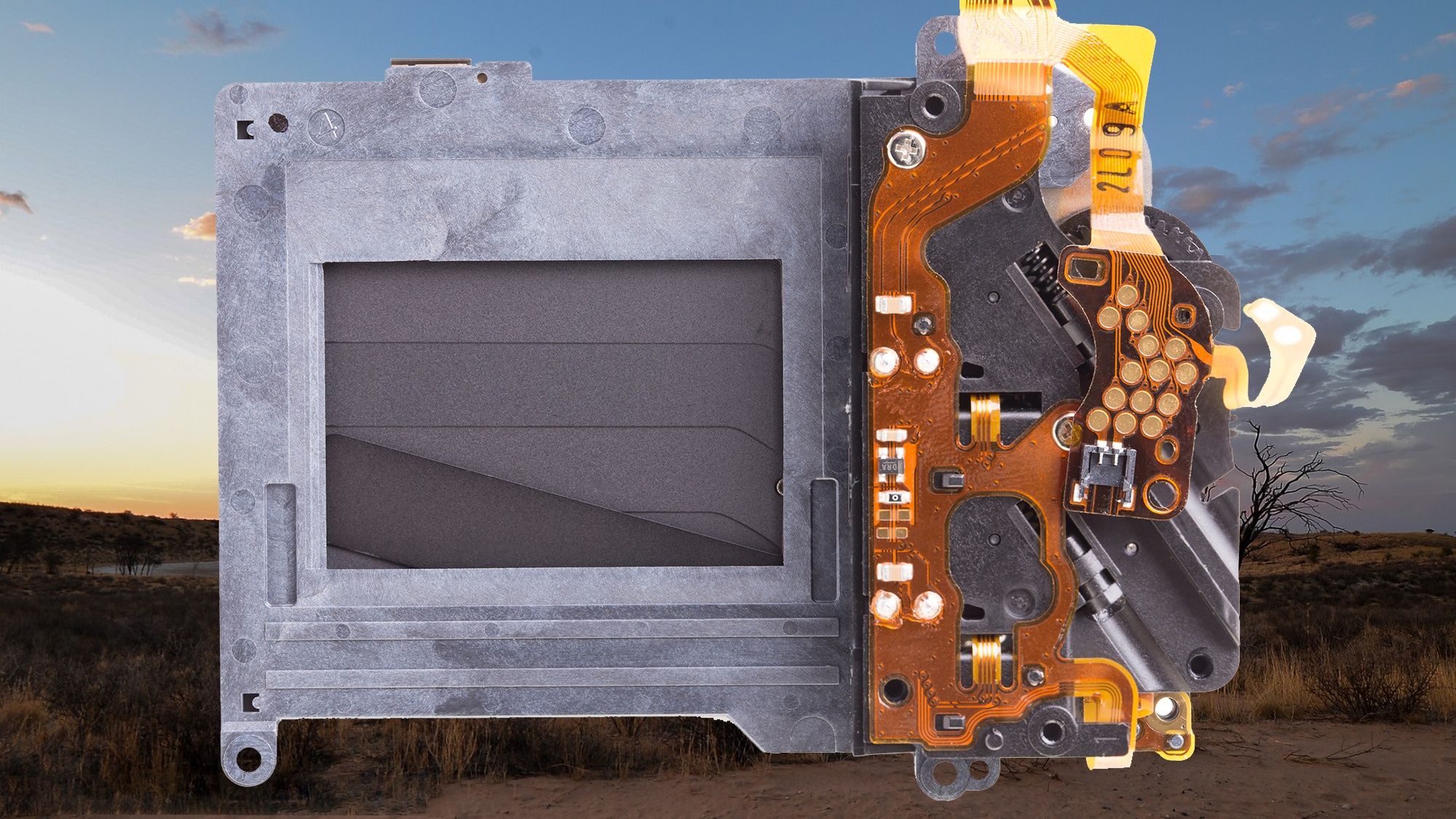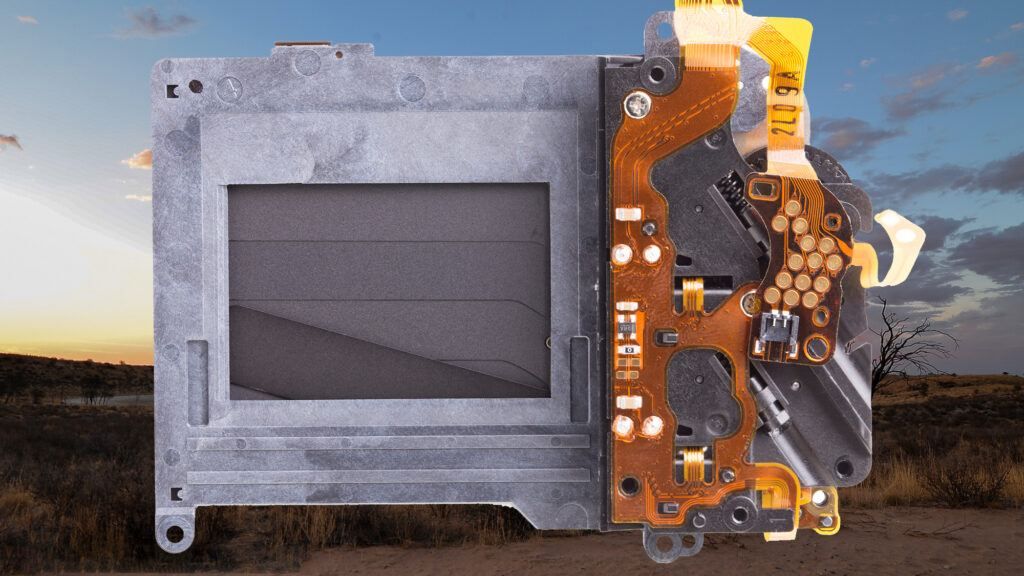Introduction
I bet you have seen or heard the term ‘rear curtain sync’ somewhere before and perhaps decided to ‘Google it sometime.’ Then you forgot about it because it does not seem to affect your photographic life at all.
Well, if so, then I have news for you: you probably lost out on a few opportunities to produce interesting and/or artistic images, or you produced a couple of images with ‘weird’ flash effects using slow shutter speeds and you have no idea why.
If so, then this guide is for you.
What will you learn?
In this guide, we are going to have a look at rear-curtain sync and compare it with front curtain sync on a few occasions. I believe that you will never look at flash in the same way again and that you’ll be able to use it more effectively to produce results according to plan.
Recommended Reading: Want a simple way to learn and master photography on the go? Grab our set of 44 printable Snap Cards for reference when you’re out shooting. They cover camera settings, camera techniques, and so much more. Check it out here.
Rear Curtain Sync vs. Front Curtain Sync
To understand what rear curtain sync is, we have no choice but to compare it with front curtain sync. But before we go there, what is this ‘curtain’ all about?
The Curtain
Every camera with a mechanical shutter release mechanism utilizes two curtains.
To understand this in slow motion, let’s cast our memories back to school concerts. We used a curtain mechanism that works exactly (well, almost) the same as camera curtains.
- A little while before the concert started, we closed the stage curtains.
- Just before the concert started, we opened the curtains.
- After each part, we closed the curtains and started preparing for the next part behind closed curtains.
The Camera’s Curtain Mechanism
Most DSLRs utilizing a mechanical shutter release mechanism have two physical curtains that control light reaching the camera’s sensors. These curtains are spring-loaded and just before taking your shot, the first curtain shifts across the sensor to block any light from reaching your camera sensor via your lens.
Every camera with a mechanical shutter release mechanism utilizes two curtains.
The moment you press the shutter release button (Aha! NOW you know why it’s known as shutter release!), the front curtain is ‘released’, and had you been able to see it, it would have appeared to be ‘falling’ to the bottom of the sensor, allowing the scene from the outside world to reach your camera sensor.
After a certain time period as specified by your shutter speed setting, the spring-loaded rear curtain is released and it ‘falls’ to cover the camera’s sensor.
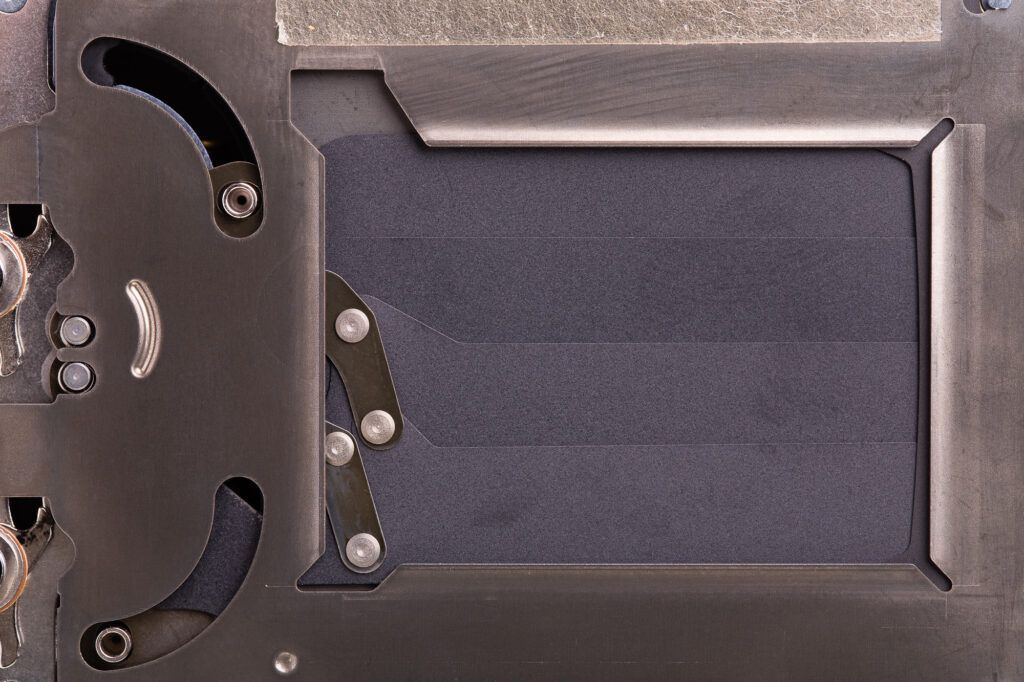
This open/close curtain mechanism causes the typical SLR camera click sound – something that got me hooked the first time I heard it!
One can argue that one curtain could also have done the trick, but the problem is speed. It would just not have been possible at fast shutter speeds.
Notes:
- The DSLR’s shutter is also known as a slit shutter or focal-plane shutter, indicative of its sliding curtain action. This contrasts with a leaf shutter which is less prone to camera shake caused by the shutter release. The leaf shutter mechanism is much more complex and expensive, though (and prone to breakage), so the focal plane shutter won the battle (by far) in terms of popularity.
- Some cameras (like mirrorless) also use electronic shutter mechanisms. In this case, the camera’s sensor is switched on and off to control exposure. The advantage of these sensors is that they are totally silent. They also produce faster frame rates and less camera shake than slit Before you get too excited about this, though, have a look at a few of its disadvantages:
- Electronic shutters are not ideal for photographing fast-moving objects as they tend to produce distortions and vibrations. This is something to keep in mind when you weigh up a purchase involving these two shutter mechanisms. Having said that, some cameras have a mechanical shutter in addition to their electronic shutter. This allows you to switch off its electronic shutter and use its mechanical shutter instead. This is done by a lot of photographers.
- Electronic shutters are not ideal for flash photography and in fact, are usually disabled by default when the electronic shutter is used.
- Electronic shutters tend to produce bands across images taken under fluorescent lights.
- The front curtain is also known as the first curtain.
- The rear curtain is also known as the second curtain.
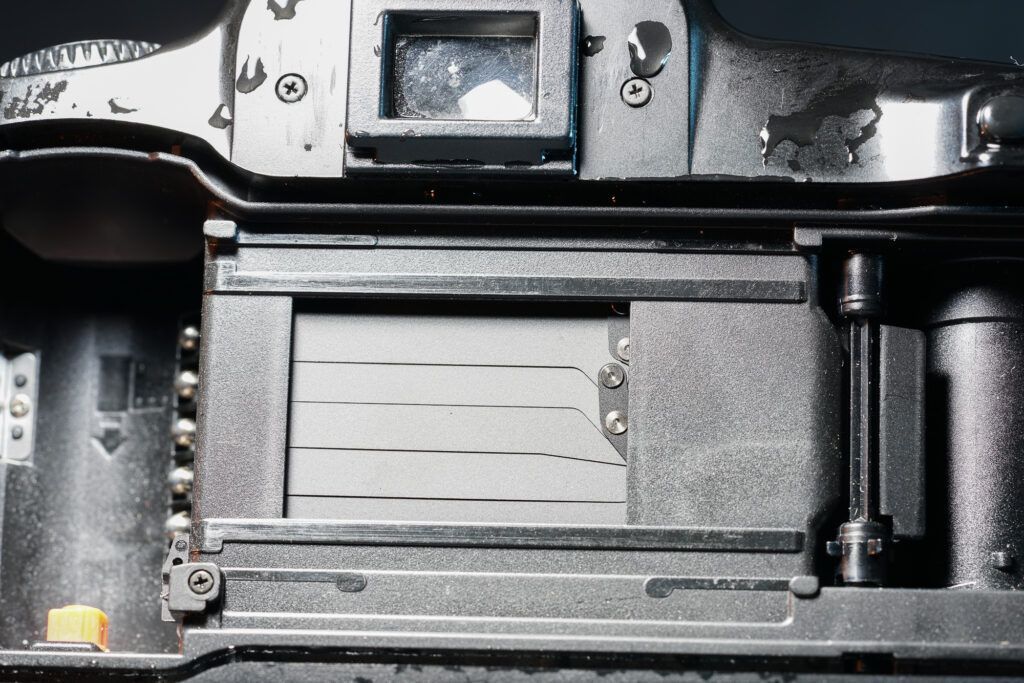
Key Lesson: The mechanical shutter release utilizes a double-curtain mechanism to control the access of light to the camera’s sensor. The first curtain opens access, and the second curtain closes it. The ‘opened’ moment may be long or extremely short, depending on your shutter speed selection.
Some DSLRs have ‘Bulb’ shutter speed mode which allows you to control manually how long the shutter stays open, either by holding down the shutter release button on-camera or by holding it down on a remote shutter release.
Front Curtain Sync Flash vs. Rear Curtain Sync Flash
To fully understand the rear curtain sync flash, we have no choice but to compare it with the front curtain sync flash.
Front Curtain Sync Flash
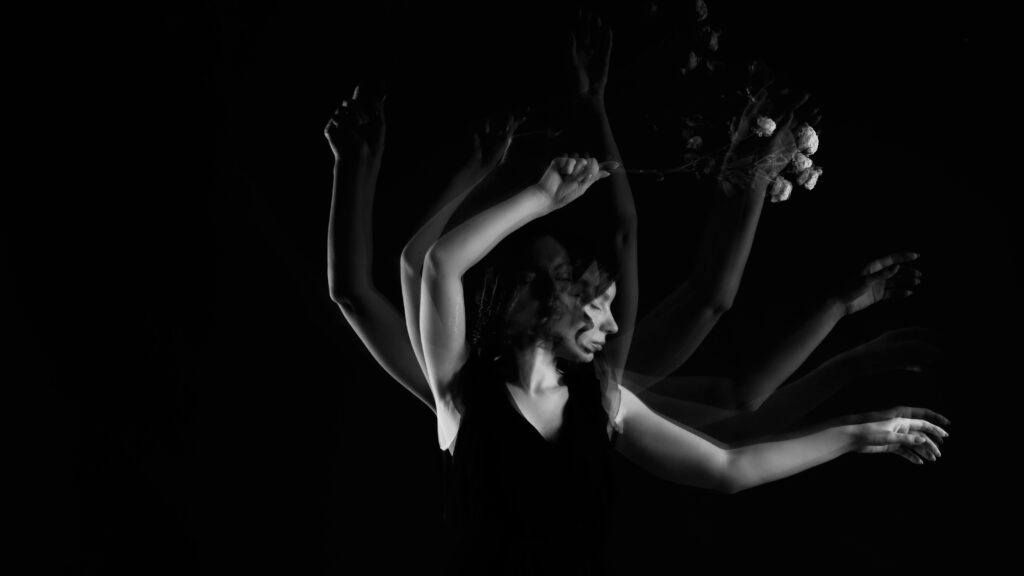
- This is also known as fill flash (Nikon), fast sync flash, or first curtain sync flash.
- The flash is fired just after the front curtain is released.
- The flash freezes the lit-up scene. All movement hereafter (while the shutter is still open) is recorded in ambient light. In long exposures, the movement recorded after the flash is blurred and darker than the flash part.
Rear Curtain Flash
- This is also known as slow sync flash and second curtain sync flash.
- The flash is fired just before the rear curtain is activated.
- The flash freezes the lit-up scene. All movement before the flash (while the shutter is still open) is recorded in ambient light. In long exposures, this movement is recorded before the flash is blurred and darker than the flash part.
Key Lesson: The curtain sync flash selection is extremely important when using flash with slow shutter speeds. Leaving it on the default setting (front curtain sync flash) may produce the opposite of the movement you’re intending to portray. Give it some thought before pressing the shutter release and adjust if necessary.
Why Do I Care?
Needless to say, in short exposures (fast shutter speeds) your curtain sync flash selection will make no difference, as the period of your ambient light exposure is very short. Only the frozen flash part is seen.
In long exposures, your curtain sync flash selection is extremely important. If you want to reflect movement, then you want to show a blur that ends up in an in-focus subject. If you portray light trails of moving vehicles, then you want the light to follow the vehicle and not lead it. This is what you need rear curtain sync flash for.
Let’s have a look at a few examples.
Front Curtain Sync Flash
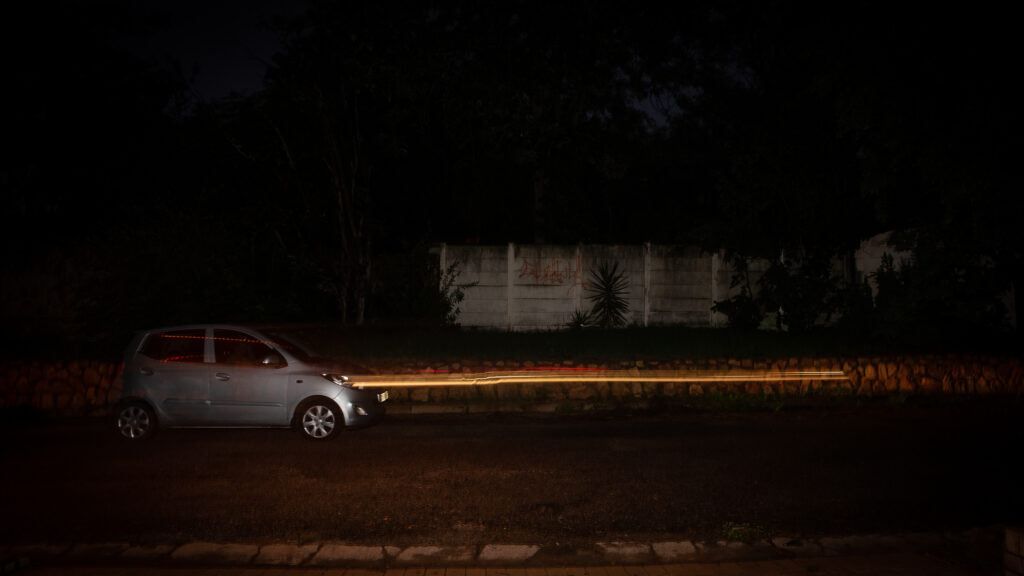
Nikon D600 + Yongnuo YN 685 Speedlite + Tamron 24-70 @ 24mm | f/8 | 1s | 100 ISO. Photograph by Tobie Schalkwyk
In this image, a front curtain sync flash was used. The flash fired at the beginning of the exposure cycle, freezing the car. A blurred image of the car then followed until the rear curtain closed. The blur was so intense that the car was invisible in the second part of the image. The bright lights of the car were not invisible, however, and were recorded right through the image recording cycle.
The human brain interprets this as a car moving backward. If this does not look kind of weird, then imagine a bunch of cars in the background and a model or other type of the main subject in the foreground. It would look like a world gone mad with all cars in reverse!
Rear Curtain Sync Flash
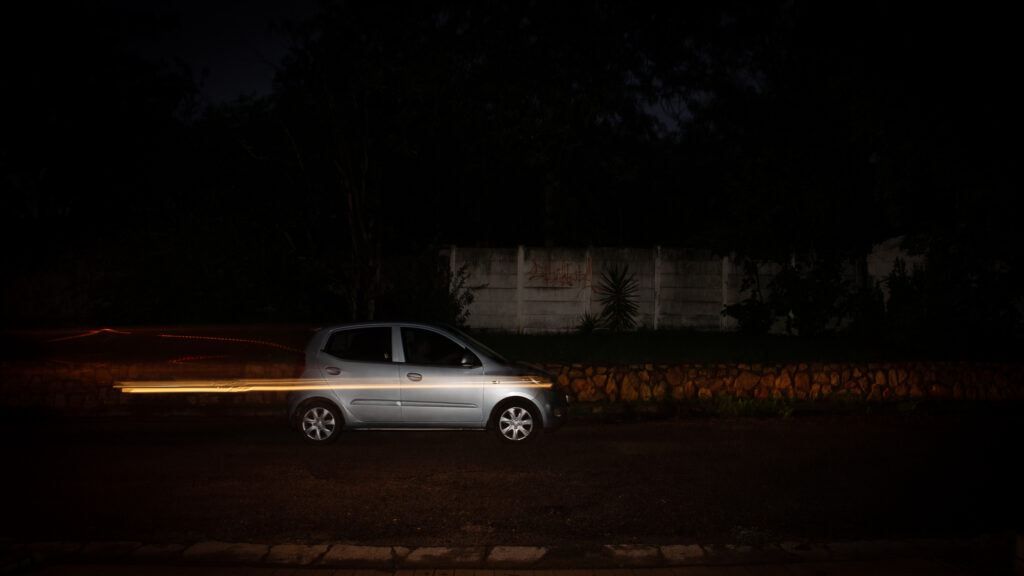
Nikon D600 + Yongnuo YN 685 Speedlite + Tamron 24-70 @ 24mm | f/8 | 1s | 100 ISO. Photograph by Tobie Schalkwyk
In this image, a rear curtain sync flash was used. The flash fired at the end of the exposure cycle. A blurred image of the car was first captured, followed by the ‘frozen image of the car. Yet again, the blurred part was so intense that the car was invisible. The bright lights of the car were not invisible, however, and they were captured from the time the front curtain was released until the rear curtain covered the camera’s sensor.
This time the perception was that the car was moving forward (fast), followed by its light trail. A bunch of cars in the background and a model or other type of main attraction in the foreground would actually create a nice artistic effect.
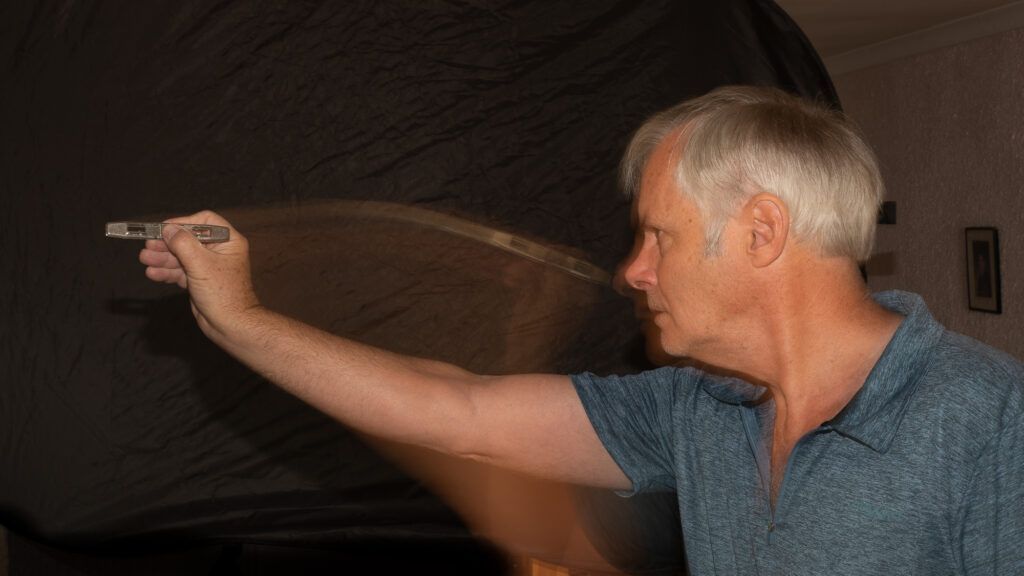
Nikon D600 + Yongnuo YN 685 Speedlite + Tamron 24-70 @ 46mm | f/22 | 1s | 100 ISO. Photograph by Tobie Schalkwyk
In this image, the rear curtain sync flash selection froze the subject’s arm at the end of the movement. Front curtain sync flash would have frozen his arm at the start of the movement, followed by a blurred arm to the end of the movement. That would have created the perception of him pulling back his arm instead of extending it. It is thus important to select the curtain sync mode in line with what movement you’re trying to depict in your image.
Key Lesson: Any photographer worth his salt should care about the proper curtain sync selection when taking slow shutter flash images. If not, then there will be occasions (perhaps more often than not) where your viewers pick up ‘something weird’ with your images. You will certainly jeopardize any chances of doing well in competitions and challenges.
Don’t doubt the fact that it’s important. Make it part of the ‘pattern’ you follow when taking long-exposure flash images. You will thank yourself later and look back at these images with pride. It’s worth the effort!
Recommended Reading: Want a simple way to learn and master photography on the go? Grab our set of 44 printable Snap Cards for reference when you’re out shooting. They cover camera settings, camera techniques, and so much more. Check it out here.
Conclusion

A ‘flash’ of a different kind! Photograph by Tobie Schalkwyk
Curtain sync flash is probably one of the features most neglected by modern-day photographers because the default selection (front curtain sync flash) works well most of the time.
The reason for that is that most amateur photographers hardly ever use slow shutter speeds. Those who do use slow shutter speeds may run into issues as discussed above without having any idea of why it is happening. The first to blame is the camera, of course!
Curtain sync flash is probably one of the features most neglected by modern-day photographers because the default selection works well most of the time.
Learn how to use rear curtain sync flash. You certainly are poorer without it. It adds a whole new dimension to your artistic photography. Use it regularly, even if only to practice it so you can use it with confidence when needed. The bonus is that you can impress your viewers. Who would say no to that?
Most of all, enjoy your photography – all of it!
Self-Check Quiz:
- What is the difference between front and rear curtain sync flash?
- What will be the result if you neglect to switch to rear curtain sync when photographing moving vehicles at night with your flash?
- Think a little about this one (and try it out): What will be the result if you photograph moving vehicles at night without your flash? Does the curtain sync selection play a part at all in this case?
- How many curtains does the shutter release mechanism utilize? What are their functions?
- Name two benefits of electronic shutter mechanisms.
- Name two problems with electronic shutter mechanisms.
- Which main group of cameras contains electronic shutter mechanisms?
- What is an important consideration when buying a camera with an electronic shutter mechanism (hint: it must be able to switch…)?


